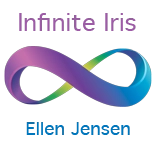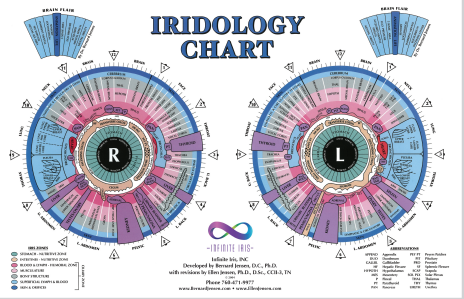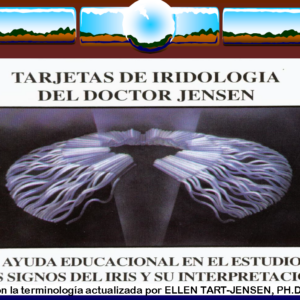Description
Iridology Chart 8.5 x 11 laminated
We are pleased to offer this beautiful updated Iridology Chart. Ellen Tart-Jensen, Ph.D., D.Sc., has added 25 years of research to the original Iridology Chart developed by Dr. Bernard Jensen.
After spending thousands of hours studying with Dr. Bernard Jensen, working in private practice, and teaching iridology worldwide, Dr. Ellen Jensen has color-coded the chart to make it easy to read each organ area and iris zone. Spinal areas as they relate to the pupil border have also been included. The reverse side of the chart lists the major organs of the body and the best vitamins, minerals, and herbs for these organs.
Comes in three sizes: Wallet Chart, the above 8.5 x 11 laminated, or Desk 11 x 17 laminated. And available in 8.5 x 11 in Spanish
What is Iridology?
The study is commonly known as Iridology or Iridology analysis and is sometimes mistakenly referred to as Iridology diagnosis. Iridology focuses on examining the iris of the human eye.
According to Ellen Tart-Jensen, Iridology is the scientific study of the iris’s colors, pigments, and structures, which is the colored part of the eye. It studies how these elements relate genetically to the body’s strengths and deficiencies and how they are reflected through a reflex response.
Many practitioners in this field also consider the border of the pupil and the vascular markings in the sclera to gain additional insights into an individual’s overall health.
The iris of our eyes is unique to each of us. It provides a genetic blueprint that is specific to our body. Through the study of iridology, inherited physical weaknesses that may have affected our family members can be detected. By analyzing the iris, an iridologist can assess a person’s overall state of health. And reveal potential inflammation and irritation in various bodily parts. This makes iridology a useful analytical tool for identifying potential health issues.
Modern iridologists commonly employ iridology cameras to capture high-resolution still images of both the left and right iris. These images are then analyzed using iridology maps, charts, or even iridology software to enhance the diagnostic process.
Iridology complements various health sciences by offering information about existing ailments and their root causes. It is regarded as a safe and non-invasive analytical tool that can be integrated with both conventional and complementary medicine.
Iridology aims to help individuals understand their genetic strengths and weaknesses, empowering them to take proactive steps toward self-care.




